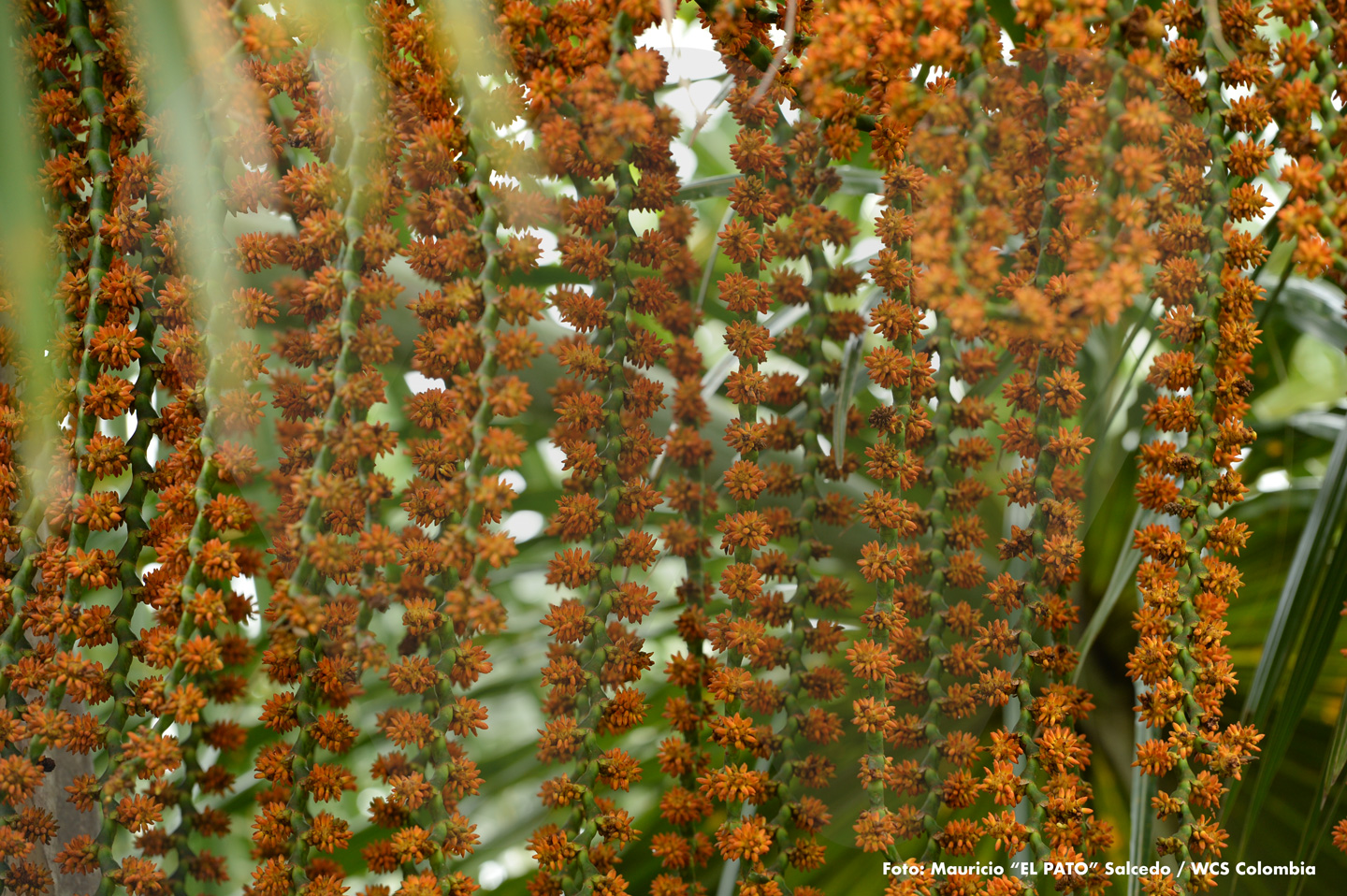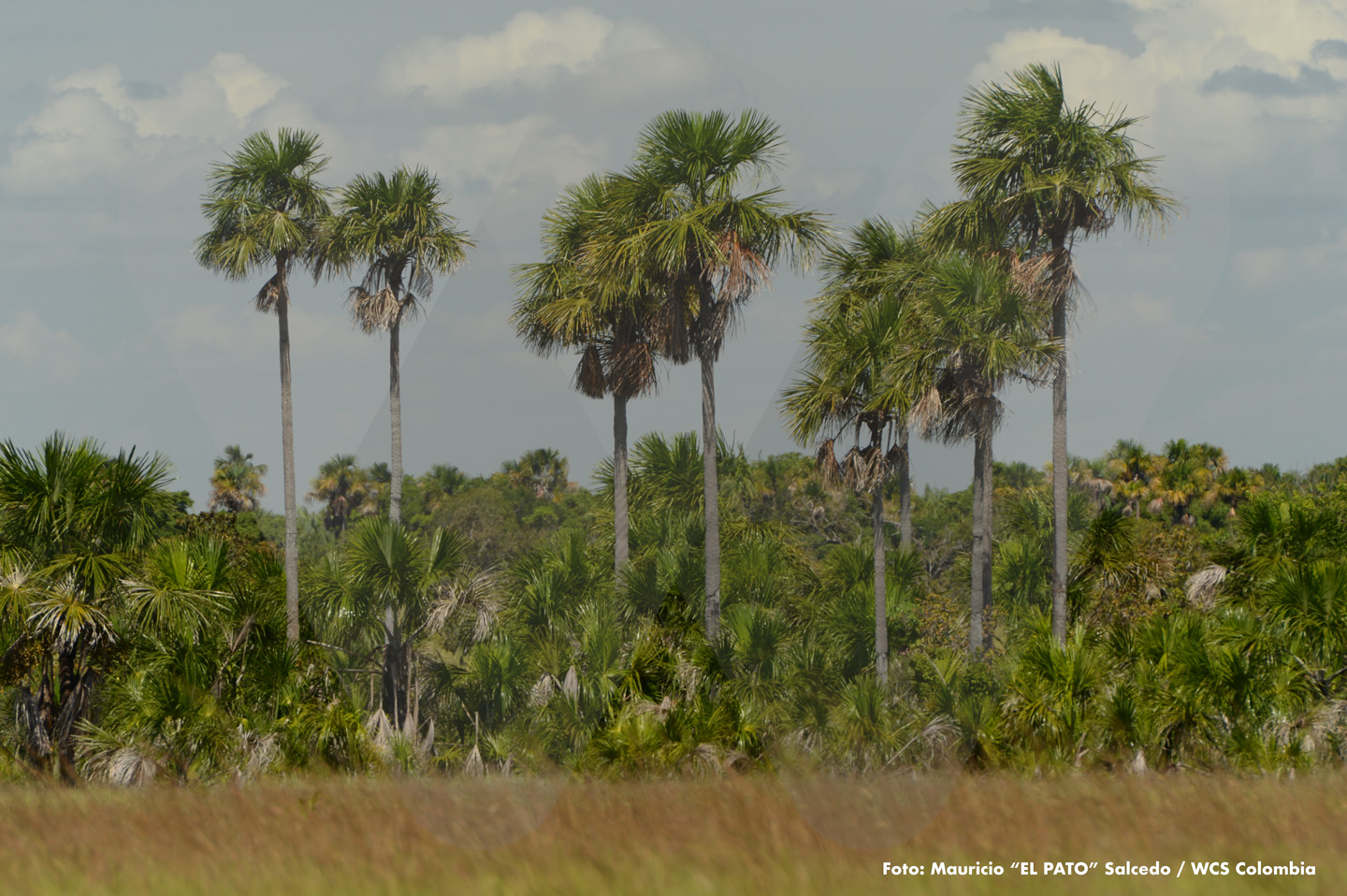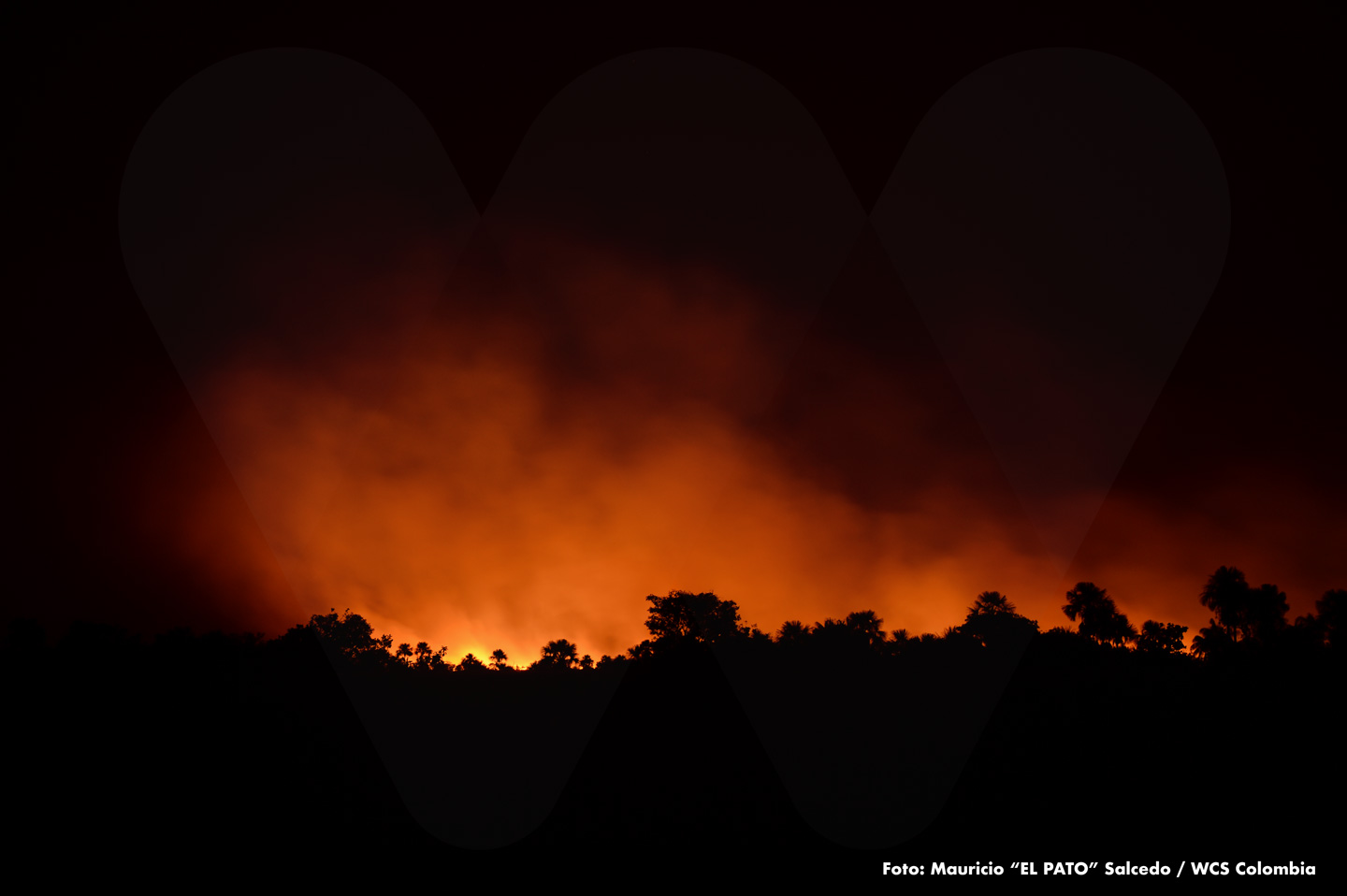 Where Does It Live?
Where Does It Live?
Mauritia flexuosa is a species widely distributed across northern and central South America, a vast region whose countries share the common trait of belonging to the greater Amazon basin. In each of these nations, this palm carries its own local name: Canangucho in Venezuela, Burití in Brazil, Aguaje in Peru, Palma Real in Bolivia, and Moriche in Colombia. In the photo, a close-up view of its flowers.
 Uses
Uses
The range of uses that local communities make of this species is extensive. Its trunk, for example, is used to make small canoes, floors, and walls. The fruits are used to produce beverages and ice creams. The leaves serve as roofing material. Additionally, fibers extracted from the bud are woven into many objects, including hammocks, bags, baskets, and handicrafts (as shown in the photo).
 What It’s Like
What It’s Like
This palm can reach a trunk height of up to 70 meters. To achieve this size, the moriche generally requires living at least 30 years. It is also a species that thrives in “bajos,” lowland areas in the Colombian Eastern Plains known for remaining flooded during the rainy season, which typically occurs each year between April and November.
 The Morichales
The Morichales
As their name suggests, morichales are areas where Mauritia flexuosa is the dominant plant species. Regarding the ecosystem services these places provide, two stand out as especially important. First, their ability to preserve and purify water. Second, the food supply they offer to many animals, thanks to the fruits that fall from the tops of the palms.
 Cornered
Cornered
The main threat facing the moriche palm is likely the expansion of the agricultural frontier, a situation that in some cases is linked to traditional practices such as burning (photo). Additionally, the cutting of these palms to access their fruits further threatens their survival and the vital ecosystem services they provide for our well-being.
- Information taken from the book “PVS Logbook.”.
- Traslated with AI support